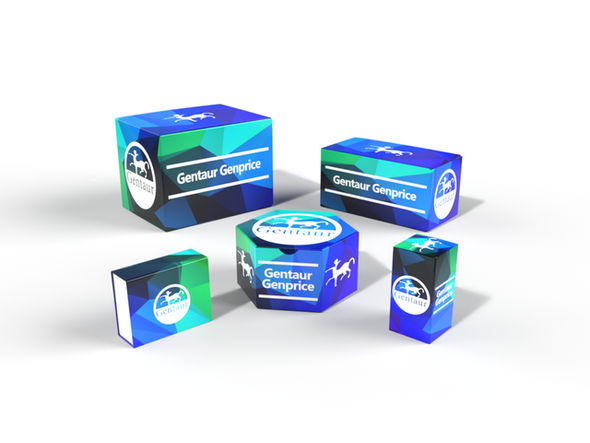740
Human Sodium-coupled neutral amino acid transporter 1 (SLC38A1) ELISA Kit | AE18630HU
- SKU:
- 740-AE18630HU
- Availability:
- Usually ships in 5 working days
Description
Human Sodium-coupled neutral amino acid transporter 1 (SLC38A1) ELISA Kit | AE18630HU | Gentaur UK, US & Europe Distribution
Species Reactivity: Human (Homo sapiens)
Abbreviation: SLC38A1
Alternative Name: ATA1; NAT2; SAT1; SNAT1; amino acid transporter system A1
Application: ELISA
Range: 0.156-10 ng/mL
Sensitivity: 0.055 ng/mL
Intra-Assay: ≤4.5%
Inter-Assay: ≤7.4%
Recovery: 0, 97
Sample Type: Serum, Plasma, Other biological fluids
Detection Method: Sandwich
Analysis Method : Quantitive
Test Principale: This assay employs a two-site sandwich ELISA to quantitate SLC38A1 in samples. An antibody specific for SLC38A1 has been pre-coated onto a microplate. Standards and samples are pipetted into the wells and anySLC38A1 present is bound by the immobilized antibody. After removing any unbound substances, a biotin-conjugated antibody specific for SLC38A1 is added to the wells. After washing, Streptavidin conjugated Horseradish Peroxidase (HRP) is added to the wells. Following a wash to remove any unbound avidin-enzyme reagent, a substrate solution is added to the wells and color develops in proportion to the amount of SLC38A1 bound in the initial step. The color development is stopped and the intensity of the color is measured.
Product Overview: Amino acid transporters play essential roles in the uptake of nutrients, production of energy, chemical metabolism, detoxification, and neurotransmitter cycling. SLC38A1 is an important transporter of glutamine, an intermediate in the detoxification of ammonia and the production of urea. Glutamine serves as a precursor for the synaptic transmitter, glutamate.The deduced 487-amino acid protein is predicted to have a cytoplasmic N terminus followed by 11 putative transmembrane domains and an extracellular C terminus. ATA1 has 2 N-glycosylation sites in the putative extracellular loop between transmembrane domains 5 and 6, and several protein kinase C phosphorylation sites. ATA1 shares 93% identity with rat Ata1 and 52% identity with human ATA2 (SLC38A2) .
Stability: The stability of ELISA kit is determined by the loss rate of activity. The loss rate of this kit is less than 5% within the expiration date under appropriate storage condition. The loss rate was determined by accelerated thermal degradation test. Keep the kit at 37°C for 4 and 7 days, and compare O.D.values of the kit kept at 37°C with that of at recommended temperature. (referring from China Biological Products Standard, which was calculated by the Arrhenius equation. For ELISA kit, 4 days storage at 37°C can be considered as 6 months at 2 - 8°C, which means 7 days at 37°C equaling 12 months at 2 - 8°C) .






